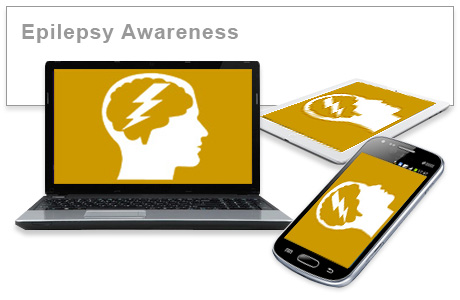epilepsy-awareness-f
Epilepsy Awareness (F): e-learning training course

This e-learning course entitled Epilepsy Awareness, is broken down into four easy-to-follow units consisting of an introduction and three study units. The course aims to raise awareness of epilepsy and explores what it is, the symptoms, the different types of seizure and the impact it can have on people's everyday lives.
By providing learners with a better understanding of the condition, it will enable them to offer more effective support to the people in their care.
Unit 2 raises awareness of epilepsy - what it means, what brings it about and how it can be diagnosed. Learners look at the different types of seizure and what happens in the brain to cause them. This unit goes on to explore the symptoms that service users might experience during a seizure because knowing what to expect is crucial for providing the support and reassurance they need.
Unit 3 enables learners to recognise the signs (if there are any) that a person is going to have a seizure, to identify possible triggers and to look at the importance of support plans in providing service users with the care they need. This unit also explains how to offer reassurance, protection and assistance to service users during and after an epileptic seizure and what to do in an emergency. Finally, the unit discusses other
related issues such as continuous and recurrent seizures.
Unit 4 informs learners how to access information easily about the wide range of medication available for people with epilepsy, as well as about the possible side-effects. It will also describe some of the other methods of treatment, such as vagus nerve stimulation. This unit also goes on to look at the implications epilepsy has on people in terms of their everyday and emotional lives. It also explains how and why the condition of epilepsy can cause death. Finally, the unit explains the records that need to be kept for service users and the importance of them being detailed and accurate.
The objectives for each study unit are that learners will be able to:
- quote some of the statistics relating to people with epilepsy who have learning difficulties
- explain what epilepsy is and identify possible causes of the condition
- identify methods used to diagnose epilepsy
- understand the basics of how the brain works and what causes seizures
- list the different types of seizure and their symptoms
- explain what a Non-epileptic Attack Disorder (NEAD) is
- describe the signs to look out for when service users are about to have an epileptic seizure
- understand the importance of knowing each service user's warning signs and support needs
- identify the conditions and circumstances that can trigger epileptic seizures
- list the do's and don'ts when supporting someone through a seizure and explain what to do in an emergency
- define the term Status Epilepticus
- access detailed information about medication available for people with epilepsy
- describe other methods of treatment such as vagus nerve stimulation
- explain the impact epilepsy can have on a person's lifestyle and state of mind
- understand what SUDEP means and why people with epilepsy may be at higher risk of an early death
- list the records that must be kept when supporting people with epilepsy.
Copyright Notice | Terms and Conditions | Privacy Statement | Disclaimer |
Copyright © 2006 - 2024 Embrace Learning Ltd.